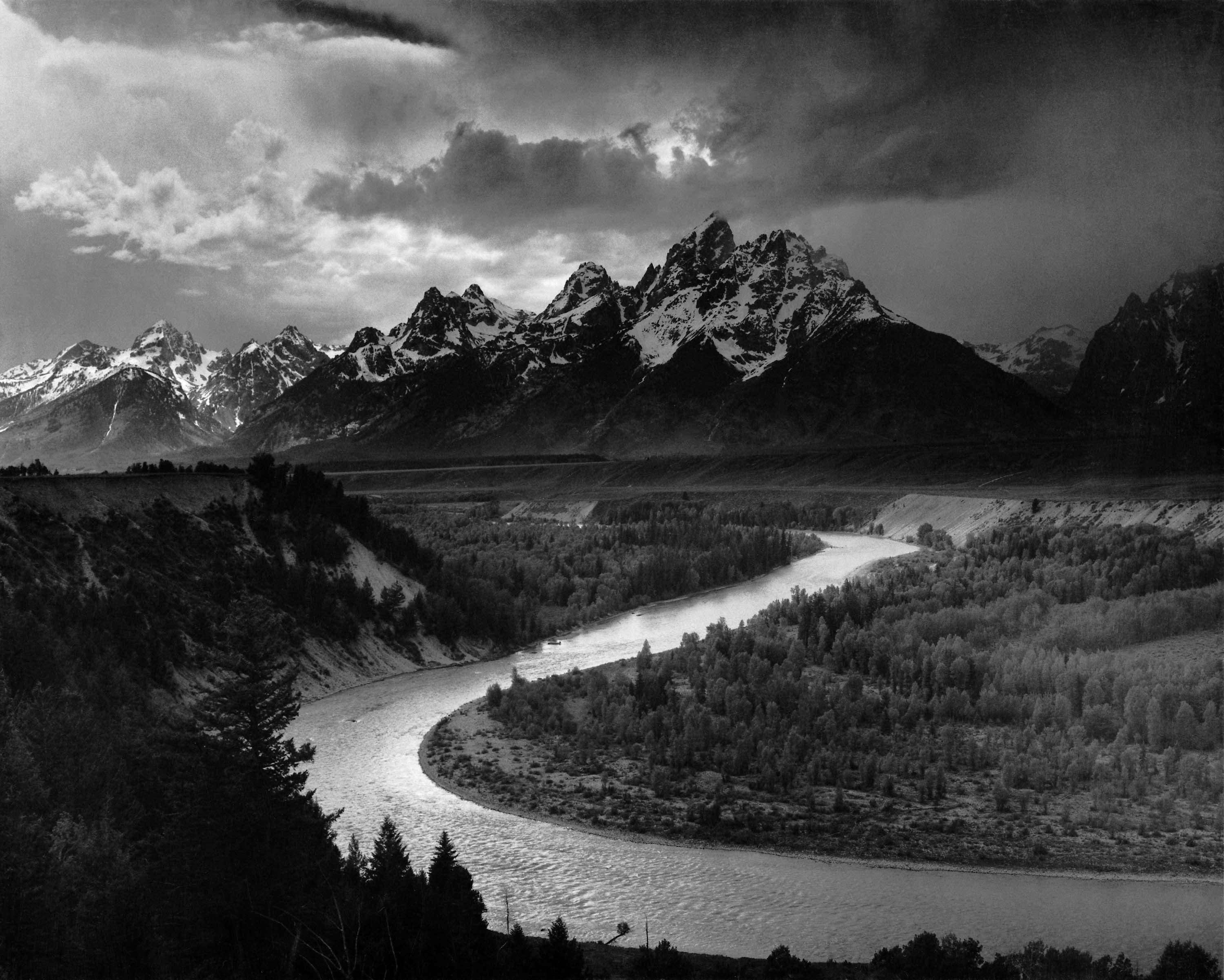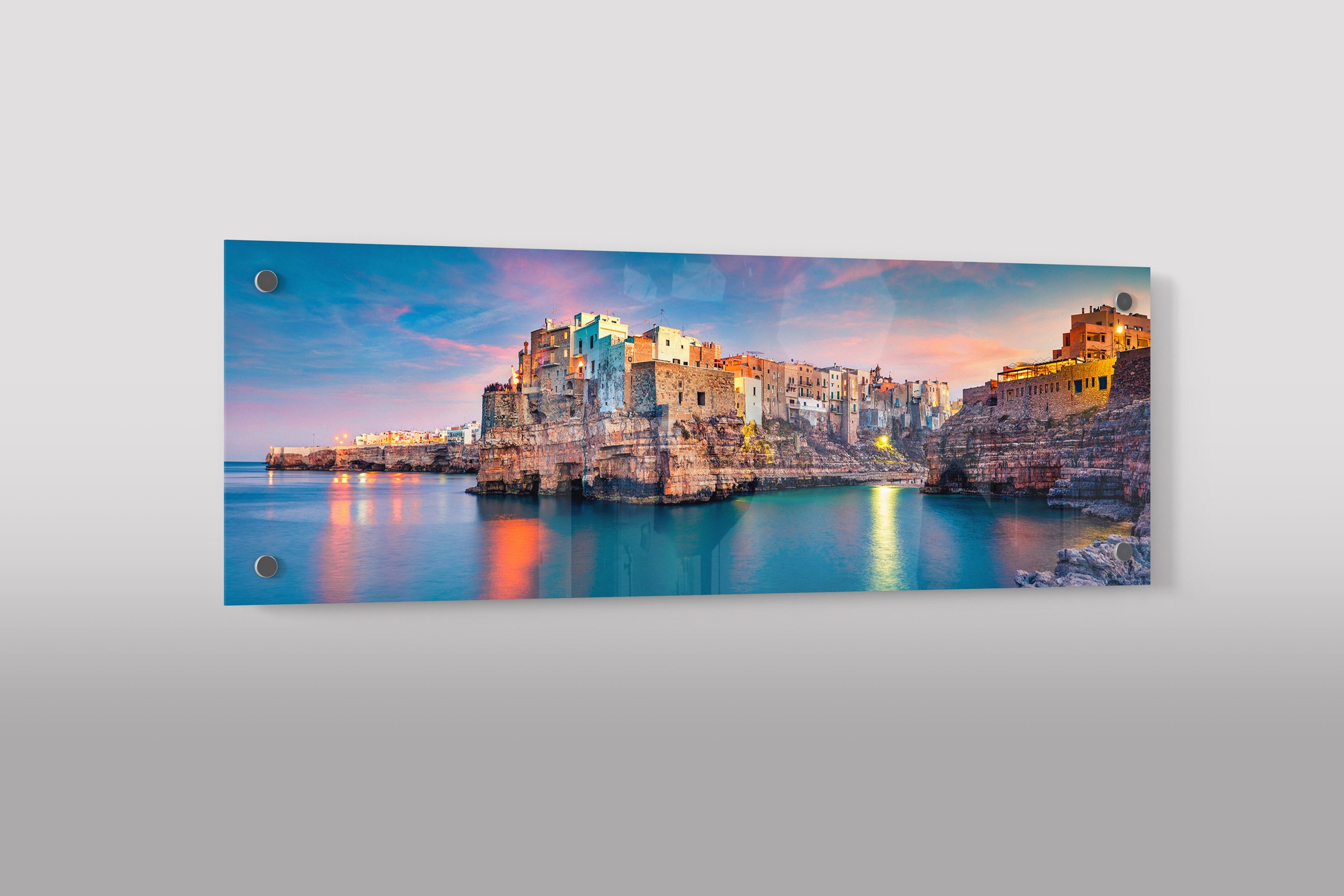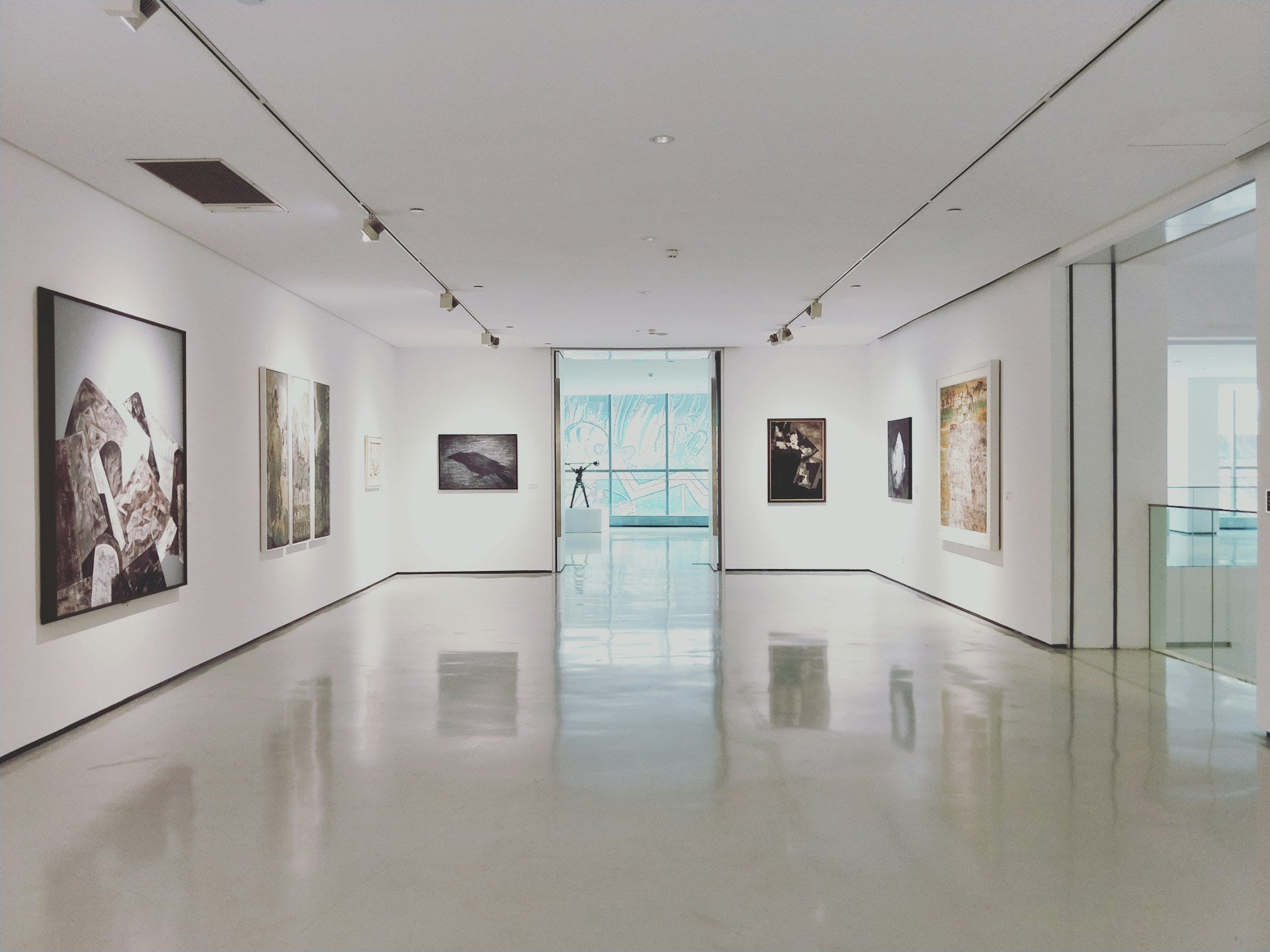
Transforming Spaces: The Elegance of Large Black and White Canvas Art
Introduction to the Timelessness of Black and White Imagery
Throughout the ages, black and white imagery has transcended temporal confines, firmly establishing itself as an enduring motif in visual arts. This duality of shades, noted for their stark contrast and absence of colour, encapsulates a form of purity that resonates deep within the human psyche. These monochromatic tones represent an aesthetic that is both classical and avant-garde, capable of transforming any space into a bastion of elegance.
In the realm of large canvas art, black and white's bold simplicity acts as a universal language, speaking volumes through its minimalistic palette. It strips down the superfluous, directing focus firmly to the subject and composition, to the raw emotion captured within the frame. This reduction to basic elements of line, texture, and form invites contemplation, allowing viewers to impose their narratives and emotions onto the canvas.
These timeless pieces serve as a bridge connecting various interior design styles, from the sleek lines of modern minimalism to the rich textures of traditional décor. They provide a touchpoint that is adaptable yet commanding, often becoming the centrepiece that ties a room together. The absence of colour invites a serene and calming influence in spaces, leveraging the potent psychological impact that black and white imagery inherently possesses.
In an era dominated by vibrant colours and digital saturation, large black and white canvas art remains an homage to the roots of photographic and artistic expression. It is an homage that continues to command attention, providing a respite from the cacophony of the everyday and transforming spaces with its timeless elegance.
The Emotional Impact of Large Canvas Prints in Monochrome
The presence of large canvas prints in monochrome within a space does not merely fill a physical void; it also invokes a profound emotional resonance among its onlookers. The scale of such artwork claims a dominant presence, drawing viewers into a contemplation that smaller pieces rarely achieve.
- The expansive nature of large canvas prints often carries a sense of grandiosity, allowing the simplicity of black and white to evoke a range of feelings from serenity to solemnity.
- Monochrome art strips away the distractions of colour, focusing the viewer’s attention on contrasts, textures, and the subject's raw emotion. It is in this minimalistic palette that the intricacies of light and shadow are amplified, often leading to a deeper emotional connection.
- An overarching sense of nostalgia is frequently associated with black and white imagery. This evocative power can transport individuals back in time or stir a sense of universality and timeless appeal.
The starkness of black contrasting against white can elicit a psychological response akin to witnessing the world in high definition – a clarity that colour sometimes obscures. This brings a layer of authenticity and truth that is both compelling and moving. Moreover, without the presence of colour, viewers are prompted to internally color the emotions portrayed, making the engagement with the artwork a more personal and introspective experience.
- Studies have indicated that the simplicity of monochromatic aesthetics can induce a meditative state, leading to reduced stress levels and heightened mental clarity.
- Furthermore, the versatility of black and white canvas art allows it to harmonise with varying moods and atmospheres of a room, adapting and enhancing the emotional tone of a space.
In essence, the emotional impact of large canvas prints in monochrome transcends aesthetic pleasure – it becomes a dialogue between the artwork and the emotional landscape of the viewer, often reflecting the profound and complex human experience.
Ansel Adams' 'The Tetons and the Snake River': A Study in Contrast

The majesty of Ansel Adams’ 'The Tetons and the Snake River' exemplifies the transformative power of large black and white canvas art. In this iconic photograph, Adams invites viewers into a masterful interplay of light and shadow, crafting a scene that is both timeless and awe-inspiring. The grandeur of the Teton Range juxtaposed with the serpentine flow of the Snake River below encapsulates a dramatic contrast that is central to Adams' artistic vision.
Adams was adept at using contrast to shape and define the textures and forms within his landscapes. 'The Tetons and the Snake River' is no exception; it asserts a visual intensity that captures the raw beauty of the natural world. The dark tones of the trees and the mountains' craggy surfaces are set against the bright sky and reflective waters, creating a scene that seems to pulse with dynamic tension.
In large black and white canvas form, this photograph would certainly command attention, its scale amplifying the contrasts within. The absence of colour focuses the viewer on the subtleties of tone and texture:
- The remarkable clarity of the details in the mountains and foliage
- The interplay between the ethereal sky and the rugged terrain
- The delicate balance between the vast, tranquil waters and the imposing peaks above
As a study in contrast, Adams’ work functions not only as a striking visual piece but also as a meditative reflection on the permanence and ephemeral nature of the landscape. It's a testament to the potency of black and white photography in capturing and transforming spaces, communicating depths beyond colour and inviting contemplation on the complexities of nature’s tapestry. In a modern space, this artwork would serve as an elegant anchor, a window into the dramatic and undisturbed wilds, embodying the splendour and simplicity of monochrome art.
Capturing Human Emotion: 'Migrant Mother' by Dorothea Lange

The emblematic 'Migrant Mother' photograph by Dorothea Lange serves as one of the most poignant exemplars of human emotion and is amplified on large black and white canvas art. Captured in 1936, this striking image has become an icon of the Great Depression. Portraying Florence Owens Thompson and her children, the photograph encapsulates despair, resilience, and the universal anxieties of motherhood during a time of great turmoil.
The profound impact of Lange's 'Migrant Mother' in a large canvas form is amplified through the monochrome palette. This absence of colour strips away any distractions, focussing attention on the texture of Thompson's weathered skin, the tattered clothing, and her deep, contemplative gaze. These elements collectively serve to immerse the viewer in the historical and emotional context of the era:
- Historical Context: The Great Depression era is conveyed through visual cues that suggest destitution and uncertainty.
- Facial Expression: Thompson's expression is a powerful conduit of emotion, resonating with viewers across generations.
- Body Language: The protective posture of the mother, shielding her children, delivers a potent sense of vulnerability and determination.
Art aficionados and historians alike agree that the depth of emotion conveyed within the frame is accentuated when the image occupies a large canvas. Such a format invites a solemn engagement with the piece, as viewers physically confront the magnitude of the emotions represented.
Moreover, the wide expanses of black and white contrast highlight Lange's prowess in composition and lighting, ensuring that each wrinkle and wistful look is intensified to its emotional apex. Emphasising the inherent complexity and profundity of human emotion, Lange's 'Migrant Mother' continues to translate the silent narratives of bygone struggles onto the grand canvases of modern-day galleries, transforming spaces through its timeless elegance and profound expressive power.
Architectural Majesty: 'Empire State Building' by Lewis Hine

Lewis Hine's photographic masterpiece, 'Empire State Building', encapsulates the grandeur and ambition inherent in early 20th-century architecture. These images, rendered in large black and white canvas art, reflect the colossal scale of human endeavour. Hine’s work brings into focus the narrative of progress and the significance of the individual worker within that vast construct, a perspective often lost amid the sheer immensity of such structures.
Through Hine's lens, the Empire State Building is not merely an iconic skyline fixture; it is a monument to the era's industrial prowess. Hine's photographs, some taken at dizzying heights, provide a visceral sense of both danger and determination. They depict workers toiling; steel beams punctuating the air, the city's miniature hustle far below.
- The photographic quality achieved by Hine translates well to large-scale representations on canvas, where every print can maintain its sharp detail and compelling contrast.
- The artwork becomes a focal point in any space, commanding attention with its bold imagery of steel and sky.
- His representation of light and shadow plays a significant role in dramatizing the architectural forms, injecting life into the inanimate and capturing the spirit of an era.
By showcasing the intricacies and textures of the building's construction, Hine allows viewers to appreciate the human achievement behind notorious architectural feats. As part of a larger collection of black and white photography or as a stand-alone statement piece, 'Empire State Building' is an enduring symbol of both the might and the elegance of urban development.
‘Lunch Atop a Skyscraper’: An Ode to the American Worker

Captured during the construction of 30 Rockefeller Plaza in New York City, the photograph known as ‘Lunch Atop a Skyscraper’ is more than a stunning visual. It’s a celebration of the American workforce’s resilience and daring spirit, especially during the early 20th century's period of rapid urban development. The image, when rendered on large black and white canvas art, speaks volumes in the language of aesthetics as well as cultural significance.
The scene, featuring eleven men nonchalantly perched on a beam hundreds of feet in the air, is timeless in its portrayal of camaraderie and stoicism against the backdrop of the burgeoning Manhattan skyline. The black and white format of the canvas art emphasises the contrasting elements—the men’s silhouettes against the vast urban expanse, the interplay of light and shadow—which magnifies the inherent drama of the setting.
In corporate offices and private homes, such large-scale artworks serve as powerful focal points, offering a glimpse into a bygone era where physical toil and high-risk conditions were commonplace for the American worker. The monochromatic palette strips the scene down to its essence, letting the viewer's eye focus on the raw humanity of the subjects.
- The composition highlights the workers’ casual defiance of gravity, symbolising the unyielding pursuit of progress.
- The use of scale brings into sharp relief the individual against the collective, illustrating the role of the individual worker in the greater machinations of industrial advancement.
- The starkness of black and white creates a bridge across time, allowing modern audiences to connect with the historical significance of the American labour movement.
‘Lunch Atop a Skyscraper’ on large black and white canvas serves as a visual homage to those who built the foundations of modern America—literally and metaphorically. It is a testament to endurance, skill, and a nation's relentless drive towards the sky.
Exploring Street Photography: 'V-J Day in Times Square' by Alfred Eisenstaedt
Street photography can capture moments of historical significance and timeless human emotion in a single frame. The power of this genre is exemplified by Alfred Eisenstaedt's iconic photograph, 'V-J Day in Times Square'.
In the midst of celebrating the end of World War II, Eisenstaedt photographed an American sailor kissing a woman in a white dress in Times Square on August 14, 1945. The spontaneity of the kiss, set against the backdrop of a crowd of jubilant citizens, captures the relief and exuberance of the era. What makes the image a quintessential example of street photography is its candid nature, the subjects oblivious to the photographer's lens, immersed in their environment and the significance of the moment.
A US Navy photojournalist named Victor Jorgensen also captured the the same photo from a different angle (see below) which was titled 'Kissing The War Goodbye'.

This image is in the public domain and the conversion of 'Kissing The War Goodbye' to a large-scale black and white canvas maintains the photograph’s integrity and impact while adding a modern touch that suits contemporary spaces. The monochromatic tones strip away the distractions of colour, focusing the viewer's attention on the raw emotions and composition of the photograph.
- Historical Context: The photo symbolises the end of World War II, thereby rooting it in a definitive historical context.
- Monochromatic Palette: Black and white enhance the timeless quality of the moment, making it adaptable to evolving decorative styles.
- Emotional Resonance: Large-scale canvases evoke an emotional response, absorbing the viewer into the scene.
- Spatial Transformation: The sheer size of the canvas art turns any space into a thought-provoking gallery, inviting contemplation of the moment captured.
Both Eisenstaedt's and Jorgensen's photographs are not only a record of a historical event but a benchmark in street photography that continues to inspire awe with spontaneous beauty and compositional perfection. It transcends the moment, creating a bridge that connects viewers across generations to the very heartbeat of that victory celebration in Times Square.
Astronomical Wonder: 'Earthrise' by William Anders
The photograph known as 'Earthrise', taken by astronaut William Anders during the Apollo 8 mission, encapsulates immeasurable beauty. It was on Christmas Eve, 1968, when humankind was bestowed with a gift of unprecedented magnitude — a view of Earth from the Moon. As the spacecraft orbited the moon, Anders captured this awe-inspiring moment when our planet appeared like a luminescent orb ascending over the bleak lunar horizon. Although the image known as 'Earthrise' is not technically black and white - the first image he shot which is also the first image ever taken of earth from the moon by a human is in black and white (see image below).

The original image, vibrant in hues, has been reimagined in large-scale black and white canvas art, transforming spaces with its elegance and simplicity. This artistic rendition draws the viewer's attention to the shapes and textures that colour might otherwise obscure. The wispy clouds, the delicate gradations marking the day-night boundary (the terminator), and the stark, rugged lunar foreground become more apparent and emotionally stirring in monochrome.
-
The 'Earthrise' photograph in black and white offers an array of interpretive possibilities. It conveys:
An inherent minimalism, focusing on form and balance rather than the distraction of colour. - A sense of the past, as black and white images often evoke nostalgia and timelessness.
- A dramatic interplay between light and shadow, enhancing the profound sense of the Earth's fragility and solitude in the void of space.
By presenting 'Earthrise' as large black and white canvas art, the piece lends a refined and contemplative quality to any space it adorns. It encourages reflection on the planet's place within the cosmos, the unity and interconnectedness of all who inhabit it, and the smallness of human concerns against the vast backdrop of the universe. This enchanting representation of 'Earthrise' not only serves as an iconic example of space photography but also as a constant reminder of the Earth's ethereal beauty as seen from afar.
Closing Thoughts on Selecting the Perfect Black and White Canvas Print
Choosing the perfect black and white canvas print is more than just a matter of aesthetic preference; it's an opportunity to infuse a room with elegance and a timeless quality. With their distinct lack of colour, these prints demand exceptional attention to detail in terms of subject, composition, and shading. The impact of a large canvas print is undeniable, commanding the gaze and dictating the atmosphere within a space.
When making a selection, one must consider the balance and flow of the room. A dynamic, high-contrast image can energise a space, while a calmer, more nuanced scene may introduce a sense of serenity. It is also vital to evaluate the existing decor and furniture to ensure the art will be harmonious, not conflicting with the room's design.
Furthermore, the quality of the print itself cannot be overlooked. Archival-grade materials ensure longevity, while professional printing techniques guarantee that every subtle gradation between black and white is faithfully rendered. It is this commitment to quality that can transform a simple photograph or artwork into a transcendent piece of decor.
In selecting the perfect piece, one should not rush. The decision must be deliberated, taking account of personal taste, the specific nuances of the space, and the message one wishes to convey. The final choice should resonate with the observer, offering a window into a world of beauty captured in the stark contrasts of black and white.
Ultimately, the right black and white canvas print serves as a centrepiece that not only enhances the room but also elevates the overall experience of the space. It should be a source of pride and pleasure for years to come.
Once you have decided on an image you want to print - Print Panoramics has the perfect selection of premium canvas print options to suit any room.





